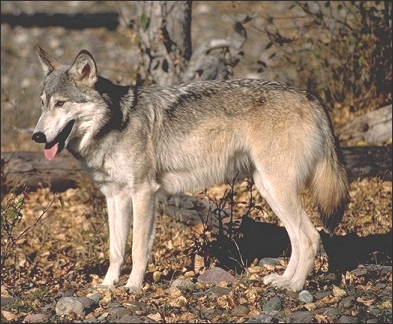

A hundred years ago, Mexican wolves abounded in the Chihuahuan Desert. These beautiful predators were master controllers of deer, javelina, and other populations, weeding out the sick and strengthening the herds. But settlers felt threatened by wolves, fearing for their livestock. The U.S. government, trying to help settlers, actually made a no-holds-barred effort to extinguish these creatures. Not only were wolves hunted for bounty, hundreds were killed by strategically placed poisoned meat. By 1940, the Mexican wolf no longer survived in the United States. The government didn't stop there, though. Soon, the US was supplying Mexico with poisoned bait as well.
Eventually, people began to recognize the importance of predators to a
healthy ecosystem. Seven wolves were caught in Mexico—perhaps all that were left. These
wolves were bred in captivity in the hopes of releasing them back to their native
habitats. Many have opposed this—some even shooting wolves that were released, despite
governmental programs compensating ranchers for any loss. Now, this magnificent animal
hangs in the balance—will we be able to "resurrect" our Lobo, or will it
truly disappear forever?

Listen to the Audio (mp3 format) as recorded by KTEP, Public Radio for the Southwest.
Contributor: Kodi R. Jeffery, Centennial Museum, University of Texas at El Paso.
Desert Diary is a joint production of the Centennial Museum and KTEP National Public Radio at the University of Texas at El Paso.

Gray Wolf. The photograph by Robert Potts (© 2001, California Academy of Sciences) is of a northern subspecies, but shows the salient characters of the species.
Brown, D. E., Editor. 1992. The Wolf in the Southwest: The Making of an Endangered Species. University of Arizona Press, Tucson, 193 pp.